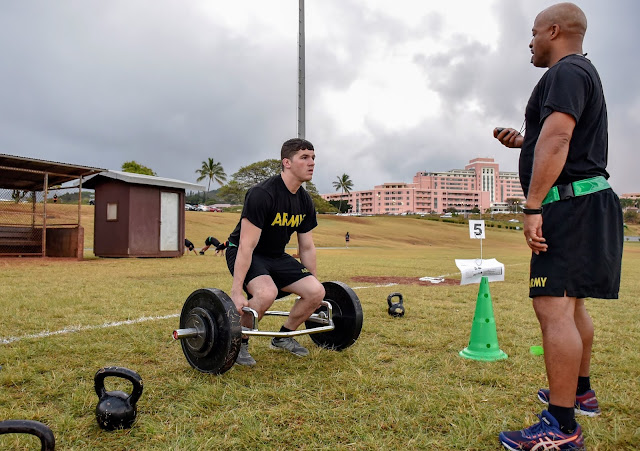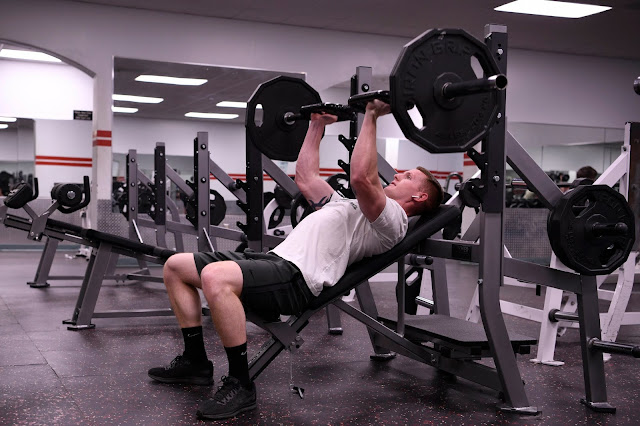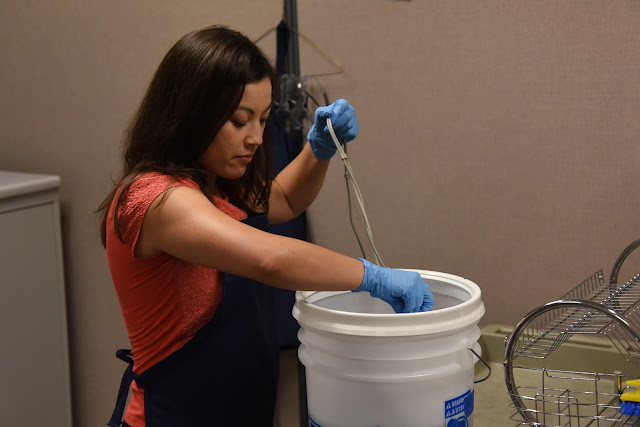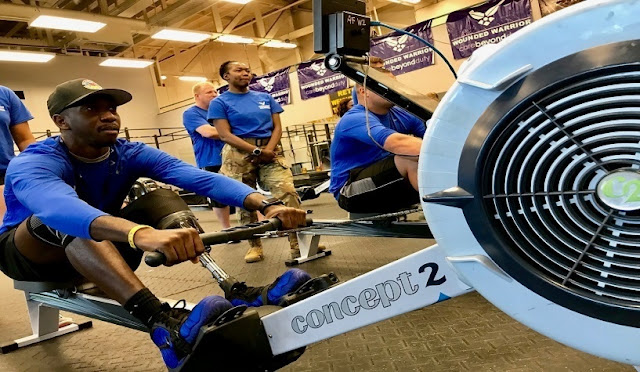The case for cross training
Tripler Army Medical Center
Story by Leanne Thomas
By Capt. Joshua Sorge, Tripler Army Medical Center Physical Therapy Clinic
HONOLULU – With the advent of the internet and social media, there seems to be a new way to get into shape every day. Circuit training, yoga, resistance training workouts seem to come and go, each touting the tons of people that lost weight, gained muscle mass, or met their fitness goals. We have all tried them, or have friends that have had limited success with specific training routines. But if they work, why don’t we all have the one, perfect routine for our fitness goals? For the majority of us, we need variety to see success in our fitness goals, and cross training keeps our body having to adapt to ongoing challenges.
Cross training is working out in alternate ways to support the movements, speed, strength, power, and endurance for a specific skill.
In early training for sport or competition, novice participants typically learn through specific training. A runner will train traditionally only running, and more likely running at, or near the intended distance or time they plan to perform. Youth sports tend to focus very specifically on learning the mechanics of the intended sport. This specificity of training is important for building muscle memory and reflexes of proper mechanics that set the foundation of an athlete’s ability. Training directly for a specific event or goal is an essential part of the training, but quickly reaches its limits of ongoing performance improvement without regular changes in practice. Until the recent advent of year-round youth sports, this was achieved through offseason, and multi-sport play.
Adaption is the body’s ability to change and adapt when challenged or stressed. When dieting or working out, we utilize the body’s adaptation process to cause change. The challenge is that we quickly adapt to repeated stress. The human body can reset what is normal, and will no longer change once this has occurred. This is seen with starting a new workout routine. Initially, the body complains with muscle soreness and aches the first few days after a challenging workout. After a few weeks of regular training, we begin to adapt with less soreness, changes in strength and endurance, and finally changes in muscle and connective tissues size and strength. Typically after 8-12 weeks, we notice a change in response to a change in routine, but without additional change, our bodies stop needing to adapt, and the results plateau, or stop. Worse yet, many simple, specific, repetitive programs often lead to overuse injuries over time.
Overuse injuries are well named, as they develop from doing the same thing over and over until something breaks down. This typically happens due to the one-dimensional nature of specific training. For Example, a common overuse injury for pushups is shoulder pain. If the only way a person trains for pushups is to perform pushups, a muscle imbalance develops within the shoulder. The chest and front shoulder muscles that were initially trained to build the specific movement, begin to overpower and stretch to upper back and shoulder muscles, changing the mechanics of the shoulder. These changes regularly lead to issues with impingement, pain, and injury, overall decreasing performance. Cross training that may include stretching, pulling exercises, planks, and resistance training helps to develop the movement and supporting structures. This helps to both prevent against overuse injury, but also to improve performance.
Cross training utilizes the principles of fitness to help better train and develop the body. The principles of fitness include muscular strength, muscular endurance, cardiovascular endurance, body composition, power, and flexibility. A distance runner often has good body composition and cardiovascular endurance but needs to regularly work on flexibility to avoid injury. A competitive runner will additionally work on resistance training and power to improve speed, strength, and muscular endurance. Professional racecar drivers work out to withstand the physical and mental stresses of racing for hours on end, and professional football players spend hours in the gym, on the track, and even occasionally in a dance class to train the many facets required to stay on top in the complex competition of team sports. While specificity is a major component of cross training, the experienced athlete recognizes the need to address the areas a specific skill doesn’t cover.
Cross training also provides for protection against burn out and boredom. Variety keeps workouts from both becoming repetitive for the body, but also the mind. Changes in training also allow for active rest by alternating training on heavily worked muscles. For example biking between heavy lifting days helps to increase blood flow to tight and sore muscles, bringing in nutrients and flushing out metabolites that can prolong soreness and aid in recovery.
When planning and training for any physical activity, be sure to utilize varying training techniques to meet those goals. Simple ways to start into cross training is taking a group fitness class or making use of the services of a fitness coach or personal trainer. While repetitive practice of a certain movement is important, regularly training alternate muscle groups, differing intensity levels, and varying the focus of training has been shown to improve performance, decrease burnout, and limit injury. .




Comments
Post a Comment